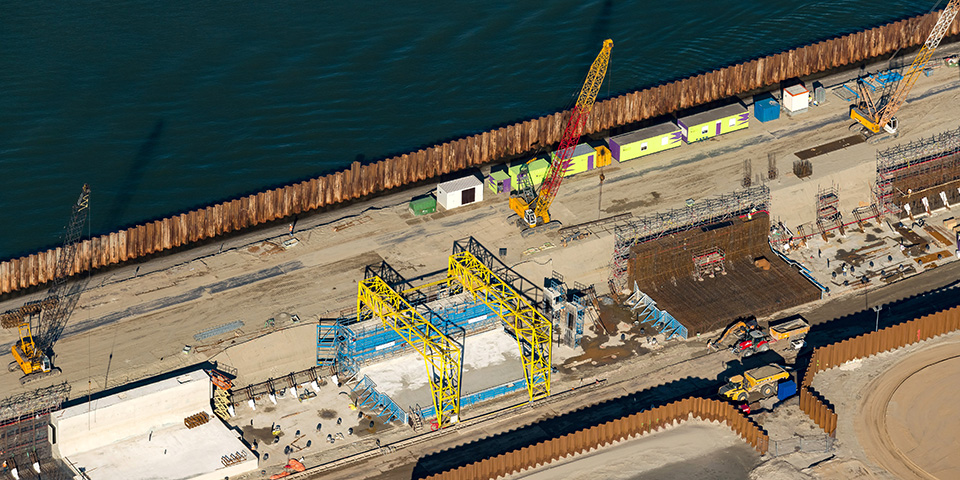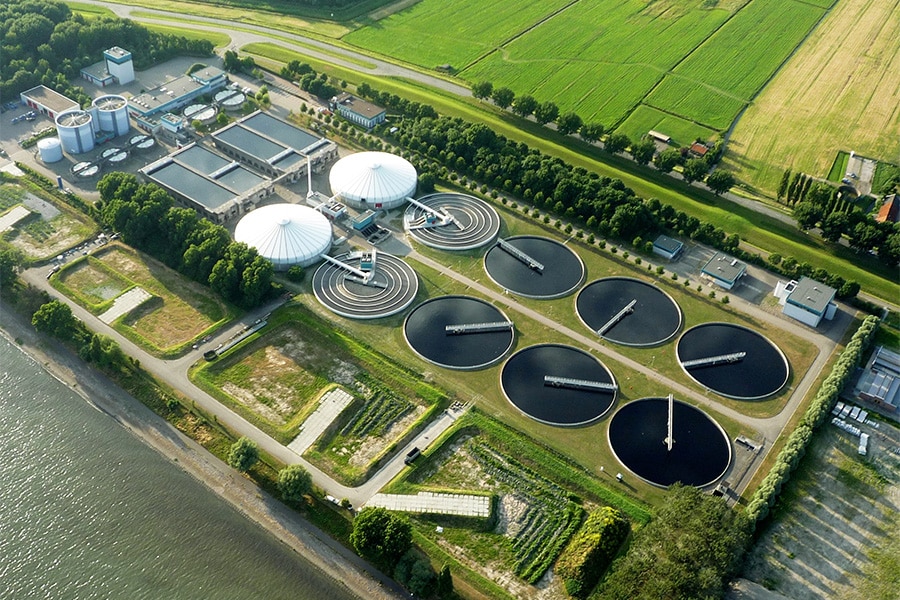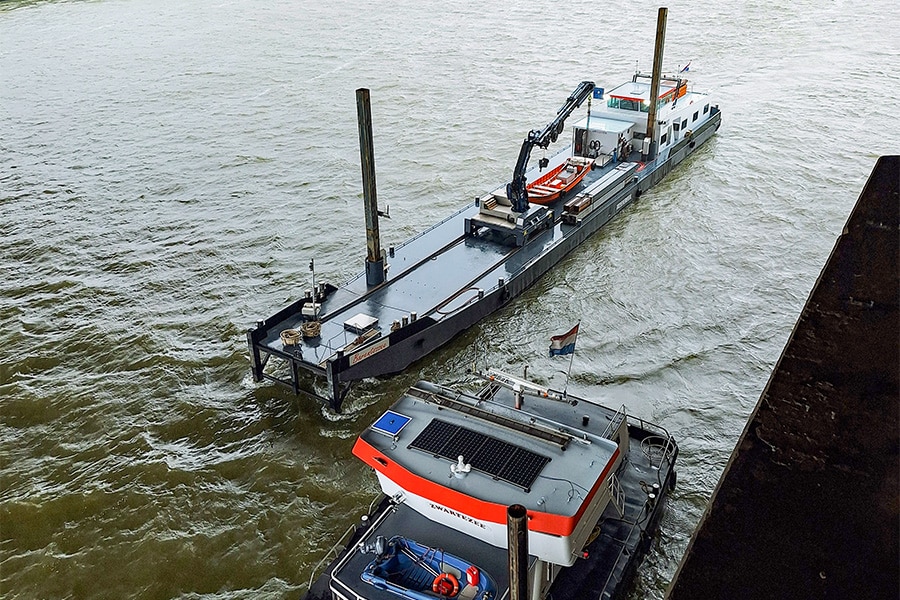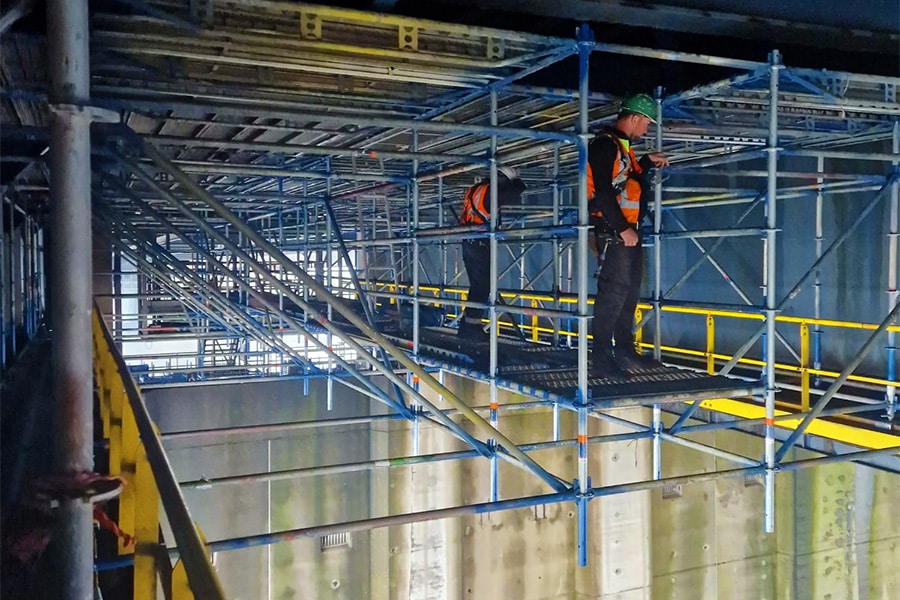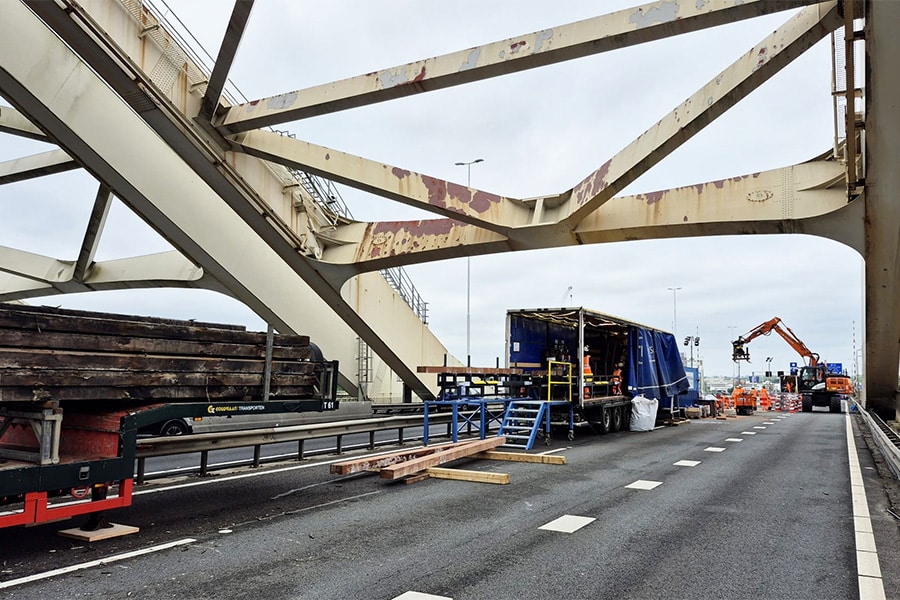
Rotterdam hes hartel tank terminal | 'Olympic challenge' in construction Hes Hartel Tank Terminal (HHTT)
Along the Mississippihaven on the Maasvlakte and connecting to the Hartelkanaal, the Hes Hartel Tank Terminal is under construction on the last large available lot of Maasvlakte 1. The Port of Rotterdam Authority is responsible for building the marine infrastructure of this terminal: a 1,200-meter deepwater quay wall, an inner harbor with a quay length of 1,000 meters and a 350-meter jetty.
"We are doing the construction of this infrastructure in close cooperation with the customer, HES Hartel Tank Terminal (HHTT)," says Adriaan Smitsman, Project Engineer at the Port Authority. "This is a very high-quality and safe state-of-the-art terminal for the storage and transshipment of clean petroleum products and biofuels. The 27-hectare site will house 54 tanks with a capacity of 1.3 million m³. The tanks range in size from 5,000 to 50,000 m³."
Perfect nautical accessibility
The narrow Hartel strip lends itself perfectly to a terminal, says Smitsman: "The site has perfect nautical access with great draught. The direct connection to the open sea allows very fast handling of logistical activities. Supply and removal of products will be done partly by pipeline but mainly by ships." The elongated shape of the terminal allows 3 large ocean-going vessels or 5 smaller ones to berth along the deep-sea quay, with a draught of up to 21 meters. The inner harbor will have 9 berths for inland navigation, 5 along the quay wall and 4 along the 300-meter long jetty in the middle of the harbor.
Build from a temporary work platform
The design by engineering firm MariTeam (SBE, MUC and IV-infra) commissioned by the Port of Rotterdam Authority was elaborated by the Combination HHTT (Van Hattum and Blankevoort, Boskalis and Mobilis). "All production drawings for formwork, reinforcement, quay furniture, brake works and the like were made by us," says Marius van Rijckevorsel, Project Director of the Combination. "For the construction of the deepwater quay wall, a narrow strip of Mississippi Harbor was first filled in to create a working platform. From this temporary facility, the steel combi wall, which is resistant to the saltwater environment, and the MV piles were installed. The driven, soil displaced steel H-profiles were driven into the ground at an angle to accommodate the tensile and compressive forces of the marine vessels." On the combi wall, the L-shaped concrete wall with relieved floor is then realized. The floor and wall are poured in one go using a steel system box from Construx. The back side of the relief floor is founded on screw injection piles.
The quay structure has a design life of 100 years. On the landward side of the quay, another sheet piling, a so-called bund wall, has been installed to prevent oil from entering the water in the event of a leak from one of the tanks. When the quay is completed, the temporary work platform will be excavated again. The released sand will be used for backfilling behind the quay on the relief floor. After this, dredging and earthworks will take place and bank and bottom protection will be carried out. For example, the inner harbor must be dredged to -9 meters. The dredged sand will be processed in a port area on Maasvlakte 2 that is yet to be constructed. This involves about 1.8 million m³ of dredging work for the entire project. Following the dredging work, the combi walls of both the deep-sea quay and the inland shipping quay will be provided with cathodic protection by means of impressed current.
Laboratory stairs
The quay walls of the inland harbor are built on the same principle as the deep-sea quay. However, the anchoring consists of grout injection anchors instead of MV piles. A special feature is that for each inland shipping berth, a so-called laboratory staircase is integrated into the quay wall so that a safe transfer can be made to and from the ship at any loading level. The jetty is constructed of concrete piles with concrete cesps and SJP girders on which the floor is poured. Steel retaining walls will surround the jetty. On the harbor floor, zinc pieces are laid with poured stone on top, partially penetrated with colloidal concrete, to protect the bottom from the screw jets.
Tight and sharp planning
In this project, Van Rijckevorsel says the planning in particular is an "Olympic challenge. "That is very tight and sharp, to which we are challenged by the Port Authority." In addition, the Port Authority conducts weekly coordination consultations with HHTT and the contractors building the terminal for HHTT at the same time. Smitsman: "The role of the Port Authority is to ensure that the various activities are well connected, so that the separate construction processes do not interfere with each other." Work on the nautical facilities will be completed by the end of 2019. The terminal is expected to be operational in the third quarter of 2021.
